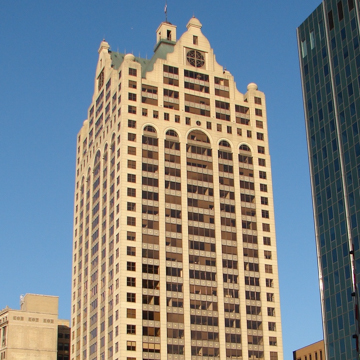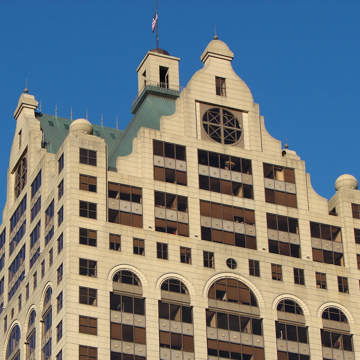The Postmodern Faison Building evokes Milwaukee’s Germanic architectural design traditions. This thirty-five-story building reflects Milwaukee’s German Renaissance architecture while providing a towering office building along the Milwaukee River. The architects designed Wisconsin’s second tallest office building to reflect the historic aesthetic of the Pabst Building of 1892, a German Renaissance Revival design that stood on this site until its demolition in 1980. The Pabst Building’s arcaded facade, tall cupola-topped roof, and shaped gables inspired this design, and the gold disks and balls on the spandrels and roof finials recall its ornamentation. These historic architectural features are abstracted and applied here as ornament. The three-part elevation of buff Texas limestone, the tall arcade covered in cast-concrete panels, and the gable resemble such iconic Postmodern office buildings as the AT&T Building by Philip Johnson and John Burgee (1979–1984) in New York City.
You are here
Faison Building (Wells Fargo Building)
If SAH Archipedia has been useful to you, please consider supporting it.
SAH Archipedia tells the story of the United States through its buildings, landscapes, and cities. This freely available resource empowers the public with authoritative knowledge that deepens their understanding and appreciation of the built environment. But the Society of Architectural Historians, which created SAH Archipedia with University of Virginia Press, needs your support to maintain the high-caliber research, writing, photography, cartography, editing, design, and programming that make SAH Archipedia a trusted online resource available to all who value the history of place, heritage tourism, and learning.
















